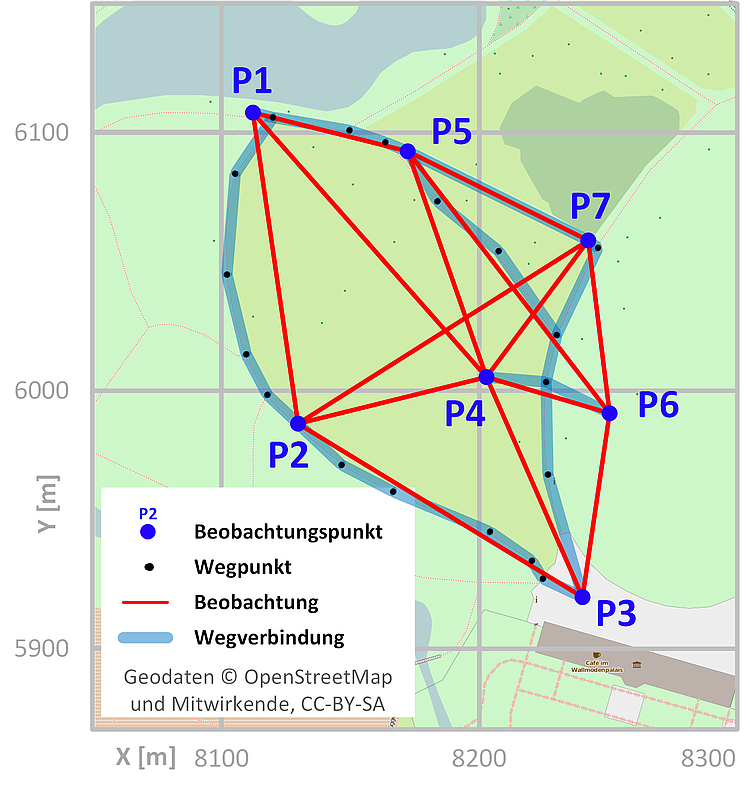Simulation-based optimization of tachymetric network measurements

| Team: | Ilka von Gösseln |
| Year: | 2010 |
| Date: | 01-01-10 |
| Duration: | 2010 - 2019 |
| Is Finished: | yes |



Project description
In geodetic networks of large extent or with a large number of points, the tachymetric network measurement is usually associated with a high logistical effort. The individual measuring points must be visited again and again in order to align the reflectors to the current tachymeter position. The efficient planning of the measurement has the goal of causing the lowest possible costs or it aims at the shortest possible measuring duration.
As part of the research project, the SimPle-Net tool will be developed. With the tool, an efficient planning of the network measurement is to be carried out. To achieve the best possible results, a complex combinatorial optimization problem has to be solved. SimPle-Net uses genetic algorithms as an optimization method. Petri nets are used to model and simulate the network measurement process.
As a result of the optimization, it is indicated in which order the measurement is made, what costs arise, how long the measurement lasts and the distance traveled by the staff during the measurement. In addition, a schedule of activities is generated for each person (see figure). It is shown which activity is performed at which time.






